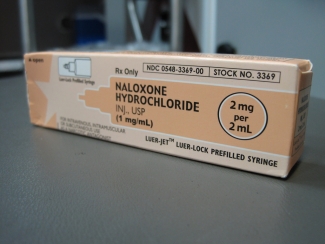
Naloxone: A Long-Term Solution and Life-Saving Resource
I never thought I’d see the day when a study would attempt to make the case that a life-saving tool is a “moral hazard.” Unfortunately, that’s exactly the flawed conclusion that a recent paper draws about the use of naloxone (also known by its brand names Narcan and Evzio), an injectable medicine that reverses the deadly effects of opioid overdoses. First responders across the country rely on naloxone when responding to 911 calls after someone has overdosed on opioids, and it has saved thousands of lives.
The study’s authors attempt to make the case that because overdose deaths have continued to increase in states where naloxone access has expanded, the tool is not effective. However, the data they rely on to make this case is flawed. The authors only looked at states where naloxone access has expanded and they compared the overdose death rates before and after expansion. They did not account for the nationwide spike in overdose death rates because the lethal drug fentanyl has flooded our communities. The data would have been stronger if it included a few examples of “control” states that have not expanded naloxone access to establish a stronger baseline for deaths increasing regardless of naloxone access. My guess is that comparison would have found that overdose deaths increased at a lower rate in states with broad naloxone access than in those states without it.
Another major flaw with the paper’s conclusions about naloxone is that they argue against its use as a long-term tool. But Naloxone was never intended as a long-term medication. Naloxone’s purpose and effects are similar to those of a defibrillator. First responders use defibrillators to immediately save lives in cases of heart attack. Two points are relevant here. First, nobody would consider it a “moral hazard” to repeatedly use a defibrillator to re-start the heart of a person with heart disease. Second, nobody would consider multiple defibrillator episodes as improper treatment for heart disease.
Like heart disease, addiction is also a disease and needs the same kind of continuing care and monitoring. That’s why Shatterproof strongly supports improving access to quality substance use disorder treatment programs. As co-chair of the Substance Use Disorder Treatment Task Force , I’m working closely with insurers and other addiction experts to find a way to expand effective, science-based treatment to those who need it. Shatterproof is also working tirelessly to reduce the stigma associated with addiction that stops people from seeking out necessary treatment.
Manchester, New Hampshire has a model addiction response program that other cities can follow. In addition to having access to naloxone, the Manchester SafeStation Program allows first responders to connect those with substance use disorders to nearby treatment programs that can help address the longer-term components of addiction and start on the path to recovery. This is how overdoses should be treated. First, save the life – that’s the moral thing to do – then use all resources available to motivate them to enter and engage in the continuing care they need to fight their disease moving forward.
Saving lives is not a moral hazard. To address the opioid epidemic, we need a comprehensive response that involves expanding naloxone access in addition to improving the quality of addiction treatment. Naloxone is not a long-term treatment solution, but it saves lives.
Dr. Tom McLellan is Shatterproof's Chief Scientific Officer. He is also the founder and chairman of the Treatment Research Institute, and former Deputy Director of the Office of National Drug Control Policy under President Obama.




